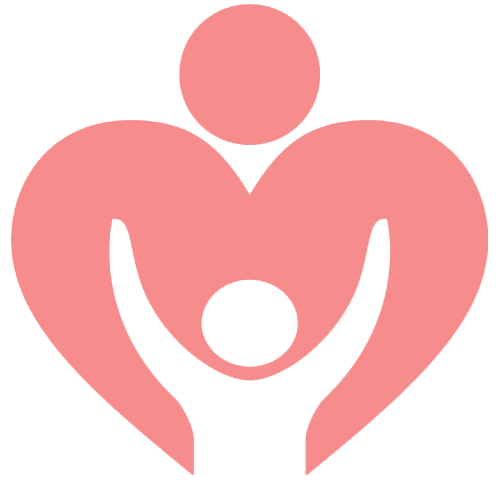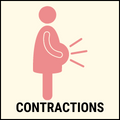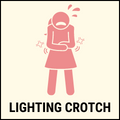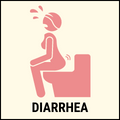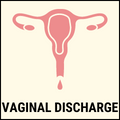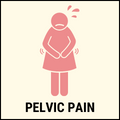Here you have reached the finish line. Childbirth can begin at any time. The child will not wait for the most convenient time for you. The mucus plug may come off when you sleep or take a shower. You should not wait for the start of contractions, it is better to immediately go to the hospital.
Nothing new happens to the baby’s body at 39 weeks. He is strong enough, gained vitality, and is ready to enter this world. All organs and systems have undergone the necessary training and can function outside the uterine lining.
A woman notices the harbingers of childbirth more and more. Braxton Hicks contractions and abdominal pain may occur. The syndrome of “nesting” overcomes before childbirth.
39 Weeks Baby Development
The main work of the fetus is now going to replenish the reserves of subcutaneous fat. Continued growth and weight gain. These are the remaining tasks of the baby before he leaves his mother’s belly. He now does not need to perform the complex work of constructing his body. It has been done for a long time.
- Size
- Weight
- Lenght
It's The Size of Pumpkin
Baby at 39 weeks is the size of a pumpkin. Its volumes no longer allow active upheavals and other various movements inside the womb.
The jolts get stronger. The child straightens the legs and arms, pushing against the walls of the uterus.

How Heavy is it? 7.25 Lb or 3.3 Kg
Weight gain is at a steady pace. This week the child has gained over 8% weight again. Now its total weight is 3 kg 300 grams or 7.25 pounds.
These figures may differ depending on hereditary factors and the lifestyle of the mother.
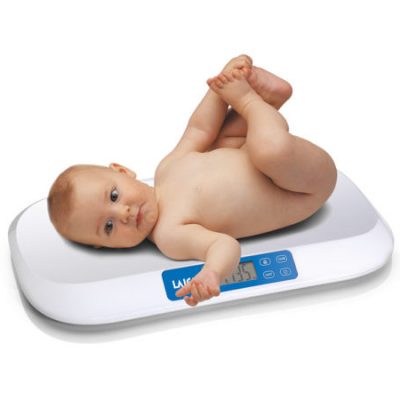
Your Baby is 20 inch or 50 cm
The growth of a newborn is considered healthy if previous weeks match the table. The baby is now 50 cm long or 20 inches.
This is the ideal size for a safe and less traumatic birth. The length increases by 2% every week.

The future newborn at 39 weeks has already taken the prenatal position. His head is pointing down, he is grouped and tucked his knees to his chin.
The body of the baby fully complies with all the standards that are necessary for a full life outside the mother’s womb. The proportions are observed, and the arms and legs are developed symmetrically. The head is no longer huge, and the bones of the skull are still soft. Passage through the birth canal can begin at any time.
The heart, lungs, intestines, stomach, and other organs have long been ready for complex work outside the uterus. The skin has evened out and the baby already looks healthier and more mature. A little more and the long-awaited meeting will take place.
Detailed moments of the development of the baby:
Intestines – Formed primordial feces – meconium. It consists of dead epithelial cells, and amniotic fluid and has the appearance of a swampy, dense mass. The intestine is completely passable. It gradually moves the meconium into its lower sections.
CNS – Sucking and swallowing reflexes develop. The salivary glands and the chewing apparatus are not yet developed. The CNS is unevenly developed. Sensitive analyzers, the spinal cord, and part of the facial nerve have matured. All other stages of improving the nervous system will continue after childbirth.
Body – Head of normal size. The shoulder girdle and chest are better developed than the lower body. The reason for this is the peculiarities of blood circulation. The lower limbs are in a greater tone.
Placenta – The process of aging of the placenta begins. It becomes thinner and changes its structural characteristics. The functioning of this organ is reduced. Some vessels are gradually emptied and cease to perform their tasks. The degree of maturity of the placenta is now above one.
Sense organs – Everything is ready to fully perceive the world around us. The baby hears sounds and reacts to them. He recognizes his mother’s voice. Eyes react to bright light. The organs of vision can focus. Developed taste buds.
Scull – Fontanelles are preserved between the bones of the skull. These are soft areas formed from cartilage. This design makes the bones of the skull malleable for the birth process. It will be easier for the baby to pass through the birth canal.
39 Weeks Pregnant Symptoms
A woman is increasingly faced with the harbingers of childbirth by the 39th week. False contractions may appear, the stomach drops, the mucous plug comes off, and the stool changes.
Does not leave the nesting instinct effect. Women want to transform and improve everything around them. The feeling that by the time the child arrives everything should be as perfect as possible. Sometimes such manifestations go beyond common sense. Mental instability may be observed: arbitrary causeless crying, mood swings, irritability. Anxiety about childbirth intensifies.
Braxton Hicks contractions False contractions at 39 weeks can be confused with prenatal. Remember that Braxton Hicks contractions are short, infrequent, and not intense. They are not accompanied by the discharge of water and the opening of the uterus. There should be no bleeding or severe pain.
False contractions are not the beginning of the delivery process. They only prepare a woman for the upcoming birth. The duration of such fights is not more than 60 seconds. The next contractions will appear no earlier than in a few hours.
Lightning crotch This type of pain occurs suddenly and abruptly. It is localized in the pelvis and vagina. It is fast, sharp, and penetrates the lower body, descending to the legs. The intensity of such sensations is very strong but short-lived.
Such lightning-fast pain can occur with a sharp change in position or careless movement. The main cause of pain is that the child is in a prenatal position. It presses on the birth canal, which causes sharp and rapid pain.
Diarrhea Diarrhea can start as early as the 36th week of pregnancy. The causes of diarrhea can be the natural cleansing of the body, pressure on the intestines, or a change in hormonal levels. Appetite may decrease along with diarrhea. These are directed processes to prepare for childbirth.
Severe diarrhea can cause dehydration. It is worth increasing the amount of drinking when such a symptom occurs. The positive factor of such a symptom is that it will be easier to give birth when the intestines are empty.
Nesting instinct The woman most likely already knows him. This symptom only intensified by the 39th week. There is an acute desire to improve everything around, to transform, to make it more ideal for the appearance of a baby. Sometimes the needs that arise go far beyond the normal. A pregnant woman wants to completely change the wallpaper and furniture or radically redraw the design.
The nesting instinct can be expressed in increased housekeeping, stockpiling, and constant cooking.
Vaginal discharge Mucous discharge is considered normal when it is formed and viscous. Not abundant streaks of blood may appear. This sometimes happens when there is uterine erosion or when a capillary in the vagina bursts.
The following discharges are considered pathological: abundant white, cheesy (a sign of thrush), intensive bloody, brown, bright yellow, and greenish. Do not confuse discharge with amniotic fluid leakage or loose mucous plug.
Pelvic pain The divergence of the pelvic bones can cause severe pain. The ligaments are loosened and preparations are underway for the upcoming birth. The child begins to gradually approach the birth canal, exerting strong head pressure. It evokes a wide variety of sensations. There may be pulling, aching pains, and sensations of strong pressure.
There is no way to relieve such pain because strong painkillers are contraindicated.
All Pregnancy Symptoms
Childbirth can begin at any time and this greatly increases the level of anxiety of a woman. The expectant mother becomes more fussy, distracted, and preoccupied. She constantly complains about new symptoms and may begin to actively gather in the hospital.
There is emotional instability. A woman can be nervous for no good reason, get annoyed, and change her mood several times a day.
“Be ready to go to the hospital at any time. Keep in touch with your doctor.”
39 Weeks Pregnant 3D Image
An additional ultrasound at the 39th week can be prescribed according to individual indications. In his appointment, there is no reason for the successful course of pregnancy. 3D ultrasound may be ordered to confirm or dispute the diagnosis. In other cases, this examination is voluntary.
Sizes of long bones
Femur 69–79 mm,
Humerus 61–71 mm,
Forearm bones 53–61 mm,
The lower leg bones 60–70 mm.
Other options
Real-time 3D ultrasound improves the quality of visualization and facilitates the diagnosis of pathologies: cleft palate or lip, underdevelopment of the nasal bone, and so on.
3D Image
3D examinations have the highest diagnostic accuracy. It is advisable to prescribe it to confirm or refute presumptive diagnoses.
This method is as safe as conventional ultrasound. Nevertheless, there must remain a strong need for his appointment.
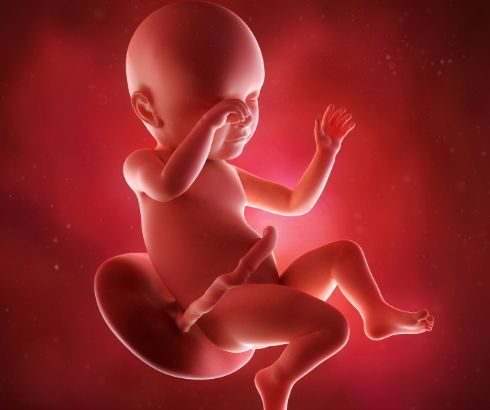
Doctors themselves will determine the degree of need for all examinations when you are already hospitalized and are waiting for the upcoming birth in the hospital. Doctors in the maternity hospital carefully monitor the condition of the expectant mother: they regularly measure blood pressure, pulse, and heartbeat. The state of the baby in the womb is monitored. All indicators are strictly accounted for.
Your Body
The mobility of a woman’s body after the 9th month of pregnancy is significantly reduced. Especially if it is a multiple pregnancy. The belly is already becoming large and it is difficult for the expectant mother to move normally. She is unable to put on her shoes on her own. It is difficult for her to stand or sit for a long time. Pregnant women walk less and lie more.
Increased swelling of the legs. The feet and ankles are most affected. Stagnation of water will continue until the very birth. Then this symptom will disappear without a trace. The woman will noticeably lose weight. A pregnant woman can gain from 10 to 20 kg of weight by the 39th embryonic week. Where 20 is a fairly critical indicator that it is better not to approach.
Long-suffering lower limbs can become covered with a vascular network. The veins often swell and hurt. Pregnant women are advised to wear compression stockings. The shifted center of gravity makes a woman stoop. The chest increases in size. The volume of the hips is growing.
Belly size & Health Conditions
The circumference of the abdomen of a pregnant woman reaches 98 cm by the 39th week. This figure can be either significantly lower or higher. It all depends on the original size of the woman. The abdomen often drops during this period and this changes its shape. Many doctors recommend wearing a bandage. It reduces the load on the pelvis, and internal organs and maintains a healthy back.
A longitudinal pigment strip from the navel to the pubis on the abdomen is visible. The navel itself has now grown significantly in size and has fallen out. The skin of the abdomen may be covered with stretch marks.
A woman’s health at the 39th week may deteriorate slightly due to the symptoms that arise: diarrhea, nausea, and pain. There is a high risk of getting conjunctivitis or thrush with a strong decrease in immunity. The psycho-emotional state of the pregnant woman worsens along with hormonal imbalance.
39 Weeks is How Many Months?
It has been 9 months and 3 weeks since the alleged conception. This corresponds to the 39th embryonic week. The pregnancy drags on and there is some kind of fatigue from the position. This is already the 41st week of gestation from the date of the last menstruation according to obstetric calculations.
Childbirth normally can begin much earlier. A full-term baby is considered from the 36th week. The date of birth is determined by the gynecologist and according to the results of the ultrasound.
Future Mom Tips and Highlights
All mothers are already so accustomed and tired of their position that they are ready to give birth at any moment. A lot of advice now focuses on how to stay calm and prepare for childbirth. It is worth studying all the information about the operation if you have a C-section. This will help in the fight against anxiety and prepare you mentally for the process.
Tips for the 39th week:
Monitor Your Symptoms More Closely – Control vaginal discharge, do not ignore the pain and frequent contractions. Try to follow the movements of the baby. Do not miss the passage of amniotic fluid.
Change your diet – It is better to give up dairy products with severe diarrhea. Eat healthier and healthier foods. Monitor food quality. Drink enough water.
Wear a brace – Wear a bandage when lowering the abdomen. It will help to maintain a healthy back, reduce pain in the lower abdomen and prevent the appearance of more severe stretch marks.
Sleep with a pregnancy pillow – The belly at 39 weeks is already very large. Sleep becomes extremely uncomfortable. Pillow for pregnant women helps to unload the spine and relax the muscles. It keeps the stomach in a normal position.
Learn about natural childbirth – Gather information about how to breathe better while pushing. Learn self-help techniques to ease contractions: massage techniques, body position, fit ball squats, and more.
Check your maternity bag – Go through the list again and complete the contents of the bag with everything you need. Don’t miss nipple cream, breast pump, pads, and other personal care products.
We advise you to prepare all close relatives and friends for the fact that you will no longer be able to be around so often. Set up all members of the family for the appearance of the baby in the house. Don’t hesitate to ask for help caring for your newborn. You can even pre-allocate responsibilities around the house. The first few months will be very difficult.
Important Checklist
- Drink more water
- Eat moderately and in small portions
- Watch for signs and symptoms of labor
- Control nesting syndrome
- Be ready for childbirth at any time
- Remain calm and positive
Having a baby will change your entire life. The daily regimen will be fully scheduled and dependent on the biorhythms of the newborn. It will take a long time to get used to constant sleepless nights. We recommend that you adapt as much as possible to the baby’s regimen and sleep at the same time as him.
